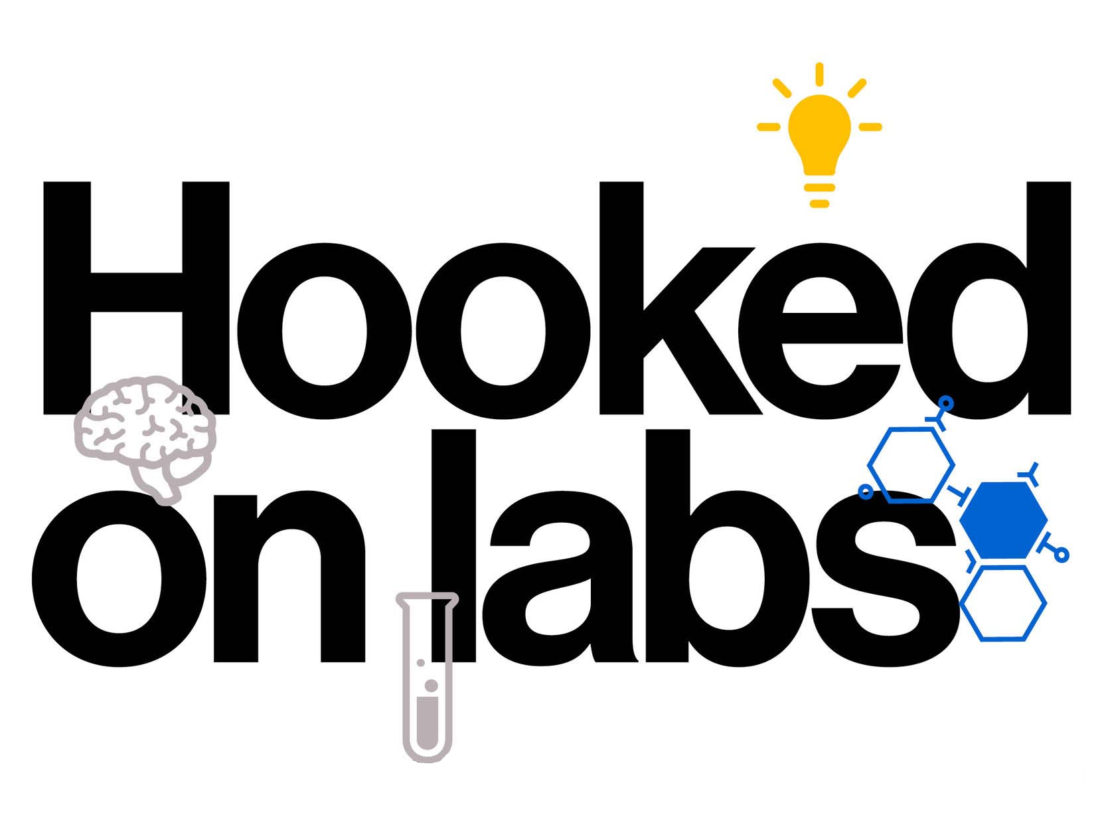
Hooked on labs
A day in the life of Robert Hooke, one of the world’s first bona fide experimental scientists working in London in the 1660s, would start with a hearty breakfast with his domestic staff, the stray cousins and nieces he had taken into his home and the skilled technicians he worked with. According to his diaries, Hooke would then do some experiments – “Tryd experiment of gunpowder” is a typical entry – in his own laboratory, close to his rooms at Gresham College on Bishopsgate. He might then visit the fledgling Royal Society, where he was “curator of experiments”, to conduct an experiment in front of a group of fellows, thereby ensuring that gentlemen whose word could be trusted were witness to his findings. Afterwards, he would repair to a nearby coffee house or tavern for discussion with other serious-minded and “competent philosophers” to debate theories that merited testing. In the evenings he was a regular at the discussions that took place around the dining tables of the Society, with the likes of his patron and employer Robert Boyle and his friend Christopher Wren. But Hooke was no snob. He liked the company of clockmakers such as Thomas Tompion and the instrument maker Christopher Cocks. Often he would have tea with his laboratory assistant Henry Hunt. In a remarkable career spanning many different fields, Hooke discovered the laws of elasticity governing the behaviour of springs, enabling the development of the watch; he pre-empted Newton with his theories on the laws of gravity; coined the term “cell” to describe the basic unit of plants and even developed a theory of memory. Somehow he also found time to act as surveyor of the City of London, overseeing much of the rebuilding after the Great Fire of 1666, and provided Wren with the method he needed to build a dome for St Paul’s Cathedral. But perhaps Hooke’s greatest insight was not a scientific discovery but that of a place: the way of carrying out the experimental life of the laboratory.
The mode of work that Hooke invented in the 1660s is now the new mainstream. Experimentalism is no longer confined to formal scientific labs. It has become an organising method for social policy, startup businesses, venture capitalists, tech companies and the creative arts. Everyone it seems wants to experiment their way into the future and to do so they want labs, which are proliferating well beyond their traditional habitat in the natural sciences.
From startups to venture capital, arts to social policy, everyone wants to experiment and to do so they want labs

The Guardian newspaper has a lab devoted to creating digital content with sponsors. Nesta, the publisher of The Long + Short, has a 70-strong lab, just one of a new generation of public innovation labs, including MindLab in Denmark and the Human Experience Lab in Singapore, focused on tackling public policy challenges like ageing population and youth unemployment. Stanford University has its ChangeLab and Brac, the social welfare organisation in Bangladesh, has a Social Innovation Lab. Hong Kong has a Good Lab, the Lien Centre in Singapore has a ‘Social Collaboratory’ and in Toronto there is the MaRS Solutions Lab. Fab labs, where hobbyists and small-scale entrepreneurs experiment with new ways to build products, are springing up all over.
What does this recent profusion of labs in so many novel settings tell us about ourselves and what can they do that wasn’t possible before? Sceptics will argue that this new generation of non-scientific, socially oriented labs, armed with a mission to devise new approaches to learning, education, ageing, fashion and consumer products, are little more than a style statement. They’ll claim they just want to cash in on the kudos of scientific labs as places where people engage in unconventional thinking, have eureka moments and make breakthroughs that change the world. These new “social labs” don’t do hardcore scientific research, so they risk devaluing the term: “lab” has become a convenient tag sometimes lazily applied to a place where people can engage in creative brainstorming without employing any of the patient rigour of scientific research. Such a blanket dismissal of the labification of every part of the economy is at least premature and most likely wrong. To understand why, we need to go back to Hooke and the way of working he created back in 1660 where experimenting and testing went hand-in-hand with discussion and debate. Sometimes one dominates the other, but both strands – testing and talking – need to be part of a successful lab. Take testing first.
To understand labs we need to go back to 1660 where Robert Hooke's experimenting went hand-in-hand with discussion

Labs are places where people conduct experiments to test out theories. The new labs proliferating outside the hard sciences are a symptom of the spread of experimentalism as an ideology for how we should shape the future.
Curiosity is at the core of experimentalist culture: it holds that knowledge should develop by being testable and therefore provisional; and that the best theories should be designed to be examined by both data and open debate. That commitment to experimentalism is at the leading edge of a wide range of fields.
In political philosophy Roberto Unger, the Brazilian theorist, has called for a mass experimentalism in civil society to come up with alternatives to the exhausted repertoire of the traditional state. In political practice Mike Bloomberg, when Mayor of New York, created the Center for Economic Opportunity to experiment with new approaches to job creation, unemployment and welfare, all based on practical testing. Bloomberg liked to tell his staff: “I believe in God but the rest of you have to bring data.” The Centre is just one of scores of public innovation labs created over the last decade.
The Lean Start Up, Eric Ries’s bible for young entrepreneurs, recommends seeing business as a real-world experiment, making a hypothesis about what will work – a minimum viable product – to test with real consumers. As each theory is tested, the business should pivot according to the results and find a new way forward. In the world of digital business, companies like Twitter, Facebook and Google are adept at using real-time data to anticipate our desires, not just respond to them.
Meanwhile, the boho-inclined creative class of east London, Brooklyn and beyond adopts the style if not the substance of radical experimenters; inspired not by science so much as the artist’s studio as a kind of lab. The crowds flocking to the recently refurbished Musée Picasso in Paris are drawn not just to the art but to the life story of an extraordinarily bold and skilled experimentalist.
Having a lab is a concrete way to signal an attachment to this experimentalist culture, testing our way into an uncertain future. But if the new labs dedicated to tackling social challenges are to win their spurs they will all have to get used to rigorous testing.
Explore
Gabriella Gómez-Mont tackles the problems of Mexico City Lab rats There's a lab for that Why does science remain so male-dominated?Some social labs are already committed to such testing. Among them is the Behavioural Insights Team, spun out by the UK Government and now a part of Nesta, which takes a lab-like approach, running experimental trials and collecting data, to test different ways of changing citizens’ behaviour: small changes to how a tax demand is written can change the response rate. In their award-winning book Poor Economics, Esther Duflo and Abhijit Banerjee from the Poverty Action Lab at Massachusetts Institute of Technology (MIT), set out the case for randomised controlled trials of social policies, akin to those used in medicine, for example to test whether employing a classroom assistant is more effective at promoting learning in poor schools in India than giving children computers loaded with learning software.
Too many well-meaning experiments in social policy proceed without such rigorous testing before they are deployed. A classic example is the Drug Abuse Resistance Education programme, first developed in Los Angeles, which organises uniformed police officers to go into schools to warn students about the danger of drug abuse. D.A.R.E. is based on a plausible hypothesis that a uniformed authority figure will persuade young people to avoid risks. As of late 2013, D.A.R.E. was operating in 75 per cent of US school districts and in 43 other countries. Yet subsequent evaluations of the programme have shown it is ineffective. A meta-analysis of 20 studies by statisticians Wei Pan, then at the University of Cincinnati, and Haiyan Bai of the University of Central Florida, revealed that teenagers enrolled in the programme were just as likely to use drugs as those who received no intervention. Indeed there is some evidence that children who go through D.A.R.E. might be more at risk. If early testing of social policies was more thorough, then well-intentioned blunders like D.A.R.E. would not continue to spread unchecked despite their lack of efficacy.
Testing, though, is just one strand of lab work. The other is talking. All labs, including hard-core scientific labs, are places where people debate, discuss, speculate and theorise. That is as true now as it was in Robert Hooke’s time.
Having a lab is a way to signal an attachment to experimentalist culture, testing our way into an uncertain future

Thomas Sprat was a one-man, 16th-century version of Wired magazine. As the official chronicler of the early development of the Royal Society, Sprat witnessed modern science taking shape. In Sprat’s opinion the trouble with intellectual communities that predated the laboratory was their hierarchy: “Philosophers have bin always Masters & Scholars; some imposing, & all the other submitting; and not as equal observers without dependence.” The great thing about laboratories, for Sprat, was that gentlemen could think and debate in them freely. The experiment they observed was only the starting point: “Though the Experiment was but the private task of one or two, or some such small number; yet the conjecturing, and debating on its consequences was still the employment of their full and solemn assemblies.”
The sociologists Bruno Latour and Steve Woolgar concluded, in their classic ethnographic study Laboratory Life: The Construction of Scientific Facts, (1979), that the laboratory was a place where scientists constructed reality by carefully sorting through and fiercely debating evidence to craft models of how the world works. After spending weeks observing how scientists worked in the labs of the Jonas Salk Institute in California, the sociologists suggested the most important discussions were informal. Scholarly scientific communication, for example through papers, was just the tip of the iceberg.
Indeed some of the most prolific labs of the 20th century, the ones that produced a string of Nobel Prize winners, were places where people talked, often heatedly. One vital source of this conversational approach to science was Copenhagen and the culture that Niels Bohr created around his institute for theoretical physics and his nearby home. The atmosphere of intense debate, hard work and competitive playfulness, captured brilliantly in Michael Frayn’s play Copenhagen, attracted most of the founders of modern 20th-century physics: Werner Heisenberg, Erwin Schrödinger, Paul Dirac, Wolfgang Pauli, Max Born and many others. Bohr could only work out his ideas by talking to other physicists. On one occasion he and Albert Einstein got so involved in a conversation on a tram that they missed their stop, eventually got off several stops later and took another tram in the opposite direction, only to become so lost in conversation they missed their stop again. Legend has it that they went to and fro several times before finally managing to disembark at the right place.
The spirit of debate that Bohr created in the 20s and 30s spread to labs around the world in the decades that followed as his disciples, many of them Jews fleeing the Nazis, found new work. Max Delbrück, who worked in Copenhagen in the 30s, tried to develop the same culture when he became director of the California Institute of Technology and during the summers he spent at Cold Spring Harbour, where Crick became director. Delbrück’s students, Niels Jerne and Fritz Melchers, later encouraged the same lateral and collaborative approach at the Basel Institute of Immunology, another home to multiple Nobel prize winners.
At the Cambridge Laboratory of Molecular Biology (LMB), opened in 1962, the director Max Perutz set out to get researchers talking to one another from the outset: “Experience had taught me that laboratories often fail because their scientists never talk to one another. To stimulate the exchange of ideas we built a canteen where people could chat at morning coffee, lunch and tea. It was managed for over twenty years by my wife Gisela who saw to it that the food was good and it was a place where people would make friends.”
The most prolific, Nobel Prize winning labs of the 20th century were places where people debated

The new generation of creative, social and design labs may not do heavy-duty experimental research but they do build on this tradition of developing ideas through debate and discussion. New labs that stand in this tradition include the kinds of mass social change labs run by consultancies such as Reos Partners, which engage scores of people in collaborative discussion over several weeks, and organisations such as the Hope Institute in South Korea and Kennisland in the Netherlands. Social and design labs may be relatively weak on testing compared to scientific labs, but they are much stronger on talk and diversity.
Perhaps scientific labs encourage conversation of a very particular and often limited kind.
As science historian Steven Shapin puts it, the social conventions of the laboratory are derived from the gentleman’s drawing room of the 17th century: “It was the acknowledged freedom of the gentleman’s action, the honor accorded to his word, the moral discipline he imposed upon himself, and the presumed moral equality of the company of gentlemen that guaranteed the reliability of experimental knowledge. In other words, gentlemen in, knowledge out.”
To this day, science laboratories are still “gentlemen in, knowledge out” places for male bonding, where men can be left to their own devices with women as a marginal interference, their contributions often deliberately downplayed or overlooked (Susan Watts reports on this problem for The Long + Short). Social labs which are more creative, open and interdisciplinary in their orientation can show the way forward by being more conducive to women, as demonstrated by Gabriella Gómez-Mont, director of Mexico City’s fledgling Laboratorio Para La Cuidad.
One of the big divides across societies will be between experimentalists and traditionalists: between people who see the uncertainty of the modern world as a reason to innovate, try out new things, speculate and in the process create new identities for themselves; and those who see uncertainty as a reason to seek refuge in authority, order and faith in an effort to stay as they are. We are drawn to labs because they seem to offer a way to square the circle. Labs are authoritative: men in white coats are still used as authority figures to sell face cream. People working in labs should know what they are doing: the knowledge they produce should be reliable and create order out of the disorder of often conflicting data. The new social labs being created around the world are trying to kindle the same hope: a clear and authoritative way forward into an uncertain future.
All this means the term “laboratory” no longer has a stable meaning: a place where men in white coats, work with microscopes and other scientific equipment to conduct carefully controlled experiments.
Some new labs are making big architectural statements designed to project an image of scientific power and self-confidence. The LMB started life in the 1950s in a hut in the car park of the much larger Cavendish Labs, but is now housed in its own giant, dramatic looking complex. (Edwin Heathcote has explored the iconography of the new architecture of labs elsewhere in this magazine.)
Yet many other new labs will be much smaller, exploiting the collapsing price and scale of digital scientific equipment, like gene sequencers. Quite sophisticated labs can already be run out of garages. Much more lab work of all kinds is being done with and by computers: all science is now a form of computer science. More of that lab work will be done in the cloud, through virtual, international networks using shared online databases.
New social labs around the world are trying to kindle the hope of finding clear and authoritative ways to solve problems

Labs are also likely to become increasingly interdisciplinary as researchers need to combine different kinds of knowledge to tackle complex problems, especially those relating to climate change, disease control and ageing. The boundary between labs and the real world will further erode. Open science platforms like Cell Slider, created by Cancer Research UK, are engaging droves of citizen-scientists in trying to solve real and complex scientific challenges. Citizen social science will soon follow, using data and insights from the public to tackle complex social challenges. Research will move away from controlled labs and into the real world: some social scientists have taken to calling this “research in the wild”. In the era of big data and climate change, though, the real world will become a lab in far more important and troubling ways.
Many people will worry about the downsides of living in a society devoted to experimentalism, which is also dominated by large multinational companies (as Clare Dwyer Hogg has explained). Facebook was recently found to have experimented on hundreds of thousands of its users without telling them, by subtly manipulating their news feeds to see whether editing out status updates which seemed gloomy and downbeat would help to make people feel happier. In a world in which digital media companies use the vast quantities of information we provide them with to anticipate our every move, we might find we have become their digital fruit flies.
Some of the biggest challenges we face – such as climate change – transcend the laboratory, and will demand new kinds of experiments done in new kinds of ways, in the real world.
Take geo-engineering, the deliberate, large-scale manipulation of the planet’s environment to counteract man-made climate change. It is difficult to test the technology required to do this credibly in an indoor lab. Yet deploying the technology for testing in the real world raises all kind of issues about who bears responsibility should something go wrong: an eventuality that cannot be discounted. But as the need to deal with climate change becomes more pressing, so the pressure to do experiments in the real world, in real time, will grow.
The other demarcation line that will continue to erode is between commercial and academic laboratories. As more science becomes dependent upon computer power, so science will become more dependent on the powerful computer networks run by private companies like Google. More academics will be encouraged by their peers, universities and venture capitalists to create commercial ventures, partly to augment their stagnating academic salaries. The new basic units of science will not be labs so much as the social and digital networks which tie researchers and their labs together.
Some of our biggest challenges transcend the laboratory, demanding new kinds of experiments

When Hooke was at work, the area of London now known as Kings Cross was still widely known as Battlebridge, after a crossing over the River Fleet where folklore had it that the Romans fought the Iceni led by Boadicea. Next year, when the vast new Francis Crick Institute for biomedical research opens opposite St Pancras, wedged behind the British Library, the area will welcome an influx of thousands of scientists working in one of the largest new labs to be opened in a major city for years. Those scientists will arrive at work clutching lattes and bircher muesli. After having “tryd some simulations with open source software” in their high-tech labs, they can retire to one of the restaurants in nearby Granary Square, perhaps in Jamie Oliver’s new hub, where they will rub shoulders with technicians and engineers from Google (which plans to relocate its British headquarters nearby), and artists and designers attached to the Central St Martin’s art school. As the area develops, startups, angel investors and venture capitalists will no doubt join the throng.
After four centuries, science will have come full circle and emphatically announced its return to where it started, in the heart of the city. The rise of ‘inner-city science’ will remake cities, science and labs over the next two decades. We used to know where labs were, even if – like farms, factories and mines – we never set foot in them. Labs were sequestered away, in discrete places, sometimes behind barbed wire and security gates, where oddball scientists carried out dangerous activities without the risk of harming anyone. Not any more.
Over the next few years inner-city labs will sprout all over the world, from the ambitious plans of Novartis, the pharmaceuticals giant based at a research campus in Basel to lean biotech startups in San Francisco. In downtown Stockholm a giant life sciences cluster is taking shape in Hagastaden, an area with four universities; the Karolinska University Hospital; 5,300 life scientists; and more than 100,000 students to recruit from both for work and for clinical trials. This is a science district which markets its credentials by noting that Stockholm is held in high regard by Monocle magazine. A major highway will be covered over to create the area known as Stockholm Life, with its slogan “greater science, greater business, greater life.”
The resurgence of inner-city science does not just mean that labs will return to the heart of cities, rather than being located in lifeless suburban science parks. It marks a further shift in urban culture, lifestyles and patterns of work towards an explicit and deliberate experimentalism. But this is anything but a new idea. When the scientists at the Crick Institute and the Google campus start migrating into Kings Cross they will feel modern, in their gleaming new buildings replete with computers, WiFi, gene sequencers, servers, teleconferencing, smartphones, 3D printers and much more. Yet the fundamentals of the way they work, the way they assemble knowledge, the culture they create, even the lifestyles they aspire to will be following a path first taken by that remarkable, irascible bohemian eccentric who frequented the taverns and coffee houses of Bishopsgate in the 1660s, Robert Hooke: the original pioneer of the experimental life.